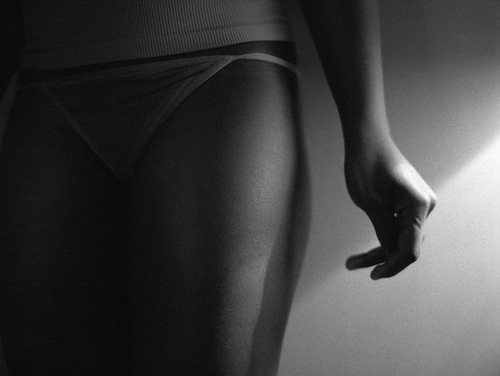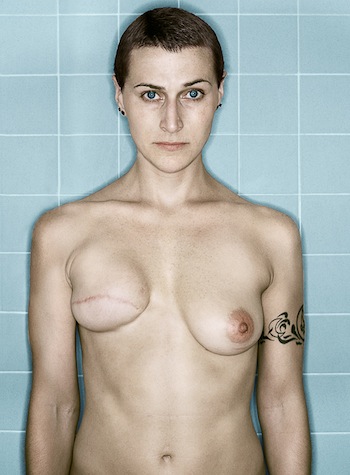For the lay observer, a group show often has the advantage of a clear theme, a unifying idea behind the curation that primes the viewer to look for certain common elements throughout the exhibit, and to interpret the work with some particular concept in mind. In Fabricated Realities, Robert Koch Gallery recently exhibited a group of experimental and surrealist photography from the 1920s through the '70s. SFMOMA's The Steins Collect offered a revelation of the early throes of modern art and the avant garde.

Tricia Lawless Murray, "LP_065." Image courtesy of Jancar Gallery.
Rayko's group show, Fraction Magazine: Three Years in the Making, bears no such obvious unity, except inasmuch as they are all images Fraction Magazine founder and editor David Bram curated from the three years of contemporary photographers' portfolios he's shown in his monthly online review. This is not a defect in the collection, but it does require more work on the part of the viewer to glean what the photographs are on about. Bram's taste isn't for the obvious, and the images he's curated rarely display traditionally seductive or eye-catching gimmickry; landscapes are drably colored, ordinary people are shown in unembellished states of ordinariness. Even Kerry Mansfield's post-mastectomy self-portrait from her "Aftermath" series seems to have been made without any wish to elicit the obvious emotional responses. Shot with what looks like an ordinary flash against a typical tiled bathroom wall, Mansfield faces the camera straight on, both the unaffected and the scarred, nipple-less breast, exposed. Her expression suggests that while she knows the gravity of what she's endured, she does not pity herself or seek pity from us. Neither is it the sort of challenging stare that presupposes and defies our labeling her as "victim" (either would cheapen the image, in that they demand specific responses rather than allow for ambiguity and therefore thoughtfulness). She appears to be saying, "I have endured this; can you look at me? And do you see me, or my ravaged breast?"

Kerry Mansfield, "Aftermath." Image courtesy of Rayko Gallery and Fraction Magazine.
Other images in the collection offer even less to the incurious; David Taylor's "Smugglers, Sonora, 2009" appears at first to be an aesthetically nondescript photograph of two Hispanic workers (it is also an image that immediately reveals to the viewer her latent racism) just standing there. No attractive color palette, no gorgeous landscape, no mark of activity, no unmissable political or social statement jumps out at us. It was easy to walk past this piece several times before realizing that the two men pictured are not regarding the photographer (and therefore the viewer) neutrally. Their stares are suspicious, guarded, almost hostile. When this is the look you see through the lens, how much nerve does it take to release the shutter? Also, the land surrounding the two men is neither city nor farmland. They're in the desert, with only forbiddingly craggy mountains in the distance; what are they doing out there? And why does one of the men have military-grade binoculars hanging from his neck?
It's an image that would make more immediate sense couched in the context of others like it, and as it happens, it is from a series in which Taylor examines both the patrolling and the smuggling operations at the US/Mexico border, called Working the Line (Radius Books 2011). But this only highlights one of the issues in photography today: we are constantly bombarded with images. Anybody with a cameraphone can produce them. While no one with any comprehension of the artistic and technical process would argue that it must be easy to create a good photograph, the ubiquity of photographs, and their accessibility, lead us to think that we are all experts at interpreting them. Images are so much a part of our lives that we take it for granted that we speak their language, and because most of the images we see every day are made to be as eye-catching as possible (in advertising or journalism, for example), we think that that is what photography should be -- something we can engage with passively and understand. It doesn't occur to us that an image made without the usual gimmicks can have just as much to offer, if we examine it more aggressively and with greater curiosity, like a challenging, but rewarding, book. Fraction Magazine: Three Years in the Making exhibits this sort of challenging, rewarding, work. While there is much beauty to admire, if you don't bring your brain along, you might miss the best of it.